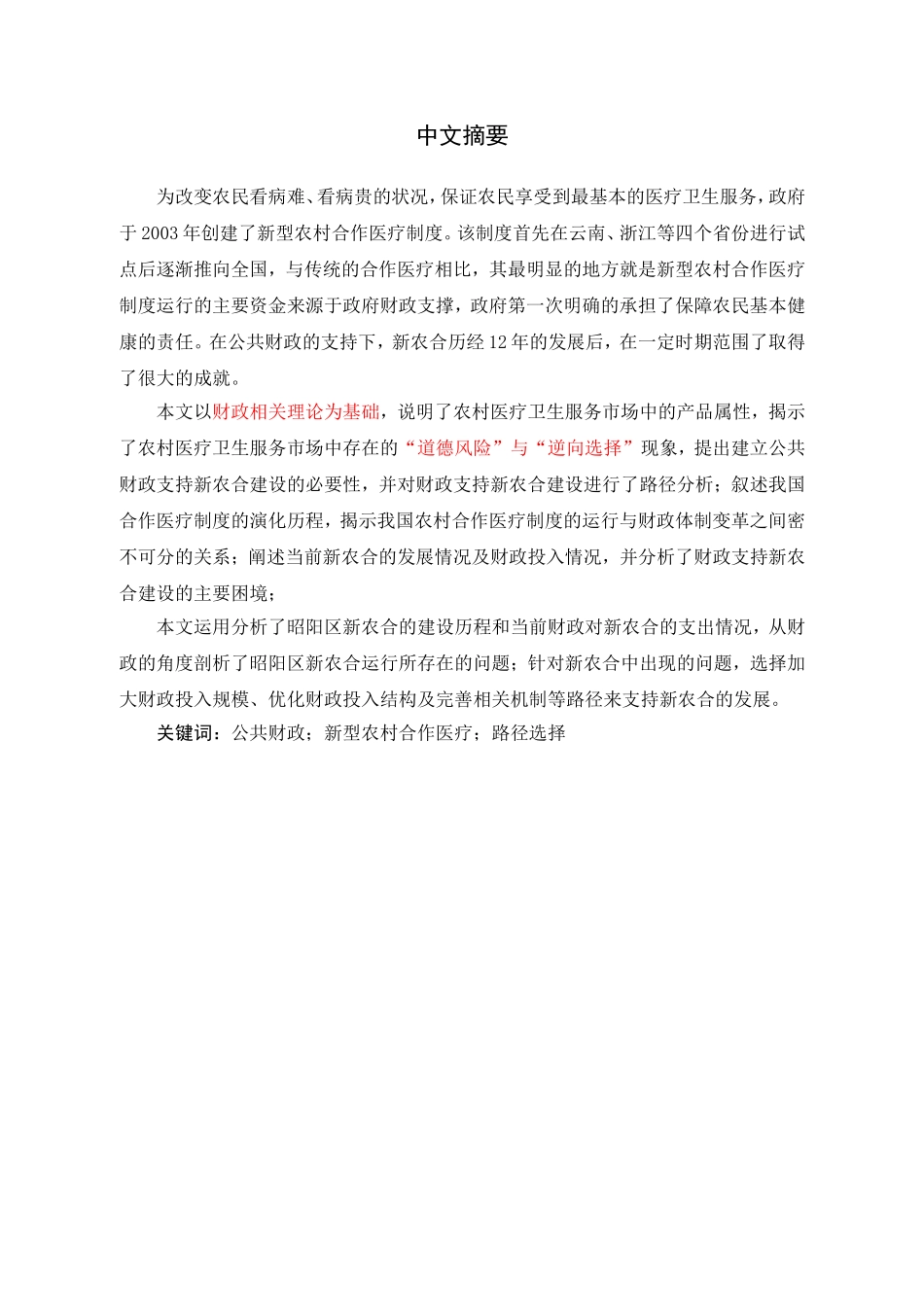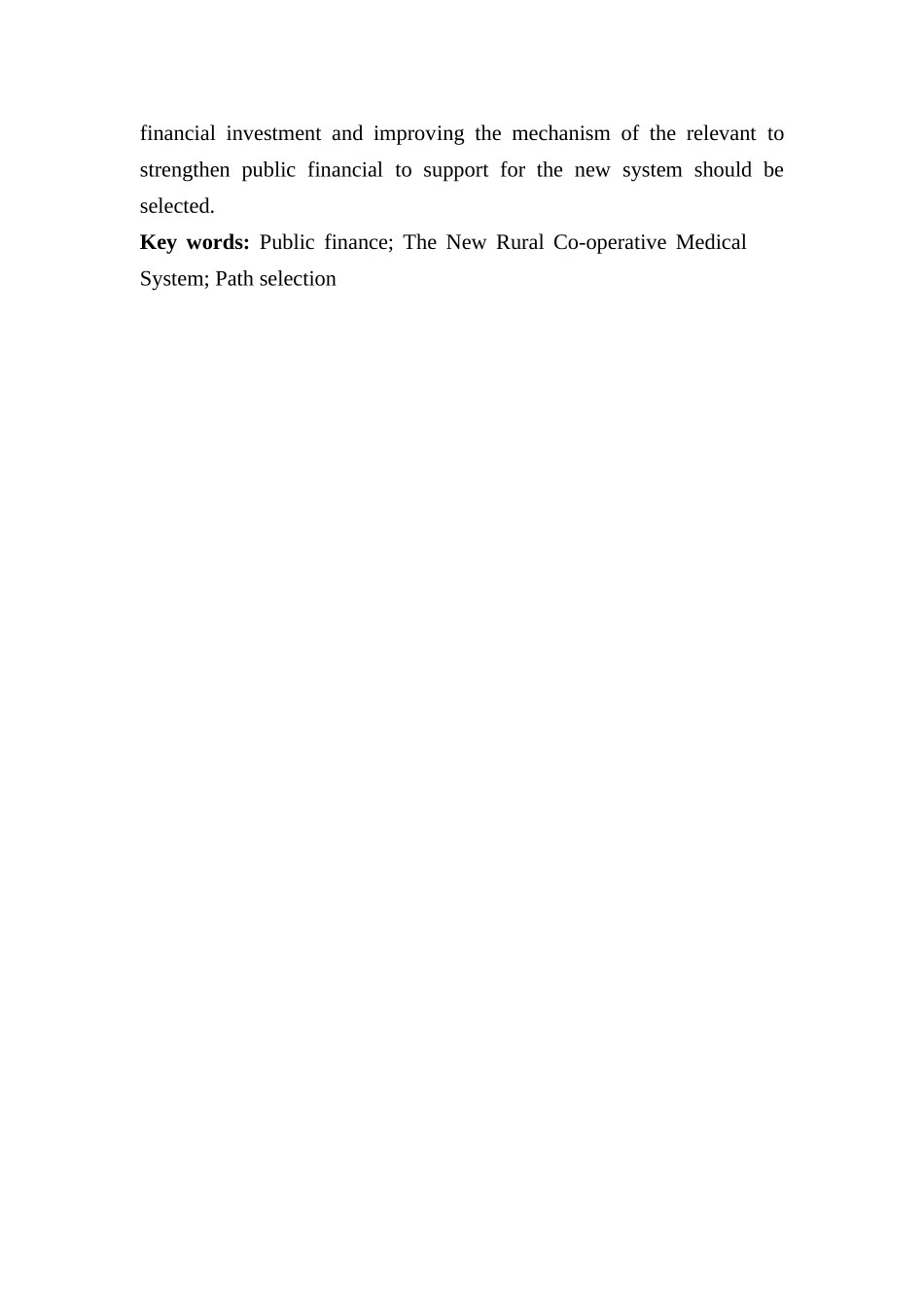中文摘要为改变农民看病难、看病贵的状况,保证农民享受到最基本的医疗卫生服务,政府于 2003 年创建了新型农村合作医疗制度。该制度首先在云南、浙江等四个省份进行试点后逐渐推向全国,与传统的合作医疗相比,其最明显的地方就是新型农村合作医疗制度运行的主要资金来源于政府财政支撑,政府第一次明确的承担了保障农民基本健康的责任。在公共财政的支持下,新农合历经 12 年的发展后,在一定时期范围了取得了很大的成就。本文以财政相关理论为基础,说明了农村医疗卫生服务市场中的产品属性,揭示了农村医疗卫生服务市场中存在的“道德风险”与“逆向选择”现象,提出建立公共财政支持新农合建设的必要性,并对财政支持新农合建设进行了路径分析;叙述我国合作医疗制度的演化历程,揭示我国农村合作医疗制度的运行与财政体制变革之间密不可分的关系;阐述当前新农合的发展情况及财政投入情况,并分析了财政支持新农合建设的主要困境;本文运用分析了昭阳区新农合的建设历程和当前财政对新农合的支出情况,从财政的角度剖析了昭阳区新农合运行所存在的问题;针对新农合中出现的问题,选择加大财政投入规模、优化财政投入结构及完善相关机制等路径来支持新农合的发展。关键词:公共财政;新型农村合作医疗;路径选择Abstract In order to change the situation that it is difficult and expensive for famers to see the doctors , and to ensure the farmers enjoy the most basic medical and health services, the government established the New Rural Co-operative Medical Care System in 2003. The system was firstly established in four provinces such as Yunnan and Zhejiang and then was pushed all over the country. Comparing with the traditional cooperative medical system, the most obvious point is that the running money of new system mainly is funded by government finances. The government first clearly undertake the responsibility of farmers' basic health safeguard. Under the support of public finance. After 12 years of development, the new system has made great achievements in a period of time. Based on the finance related theory, this ...


